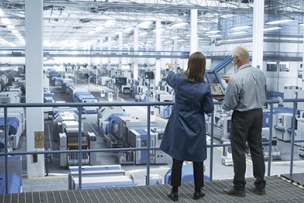“You may be asking yourself if your job site even needs to meet OSHA regulations for hazardous materials,” writes Dan Ketchum for LegalBeagle.com. “If the site contains any material that requires a safety data sheet (SDS) or, really, any liquid that is capable of harming a person or the environment, the answer is a short and resounding yes.”
The Occupational Safety and Health Administration standard that applies is 1910.120, Hazardous Waste Operations and Emergency Response (HAZWOPER).
Uncontained hazardous substances that are “toxic, flammable or corrosive can cause fires, explosions and pollution of air, water and land,” the agency warns in a pamphlet outlining the rule’s requirements. “Unless hazardous substances are properly treated, stored or disposed of, they will continue to do great harm to living things that contact them.”
There are a variety of spill kits on the market —and we’ll provide details on some of the common types. But first, you’ll want to evaluate a couple of other key items in your facility that will help you select and customize your kits.
4 Critical Questions
1. Are you meeting OSHA Hazard Communication requirements for your shop floor? You need to be sure that you’re labeling chemicals and providing proper signage. That will help avoid a spill by prompting your workers to be cautious, and if one does happen, it will help manage the situation by providing the response team with information it will need for cleanup.
2. How big is your facility? The breadth of the shop floor will help you determine how many kits you should have on hand. The closer the kit is to the locations where chemicals or other hazardous materials are regularly used, the more quickly you can stop the spread of a spill. As each kit’s contents typically can be used only once, you’ll need at least two kits, Ketchum advises.
3. What volumes of chemicals are on site? This information is critical. It lets you identify the capacity and size of the absorbent you will want to stock and will indicate other items with which you can beef up your spill kit to meet specific needs.
4. Who will be on your response team? Have they completed HAZWOPER training? You will need to select and train a team to respond to any spill defined as an “emergency” by OSHA. Its hazardous waste operations rule requires certifications for team members who respond to emergency spills—up to 40 hours of initial training and an annual training refresher. You might choose to have these team members be your spill responders even if an accident is incidental and you have detailed your plans in your hazard communications.
Incidental Spill Kits vs. Emergency Spill Kits
In OSHA parlance, two characteristics define incidental spills: “limited in quantity and posing no significant safety or health hazard to workers in the immediate area.”
The agency uses the example of a pint bottle of xylene in its HAZWOPER guidance for general business.
Read More: How Brady SPC Soaks Up Shop Floor Hazards
An emergency spill requiring compliance with HAZWOPER and necessitating the use of specified equipment, as well as containment and cleanup procedures by trained teams, involves the uncontrolled release of a hazardous substance.
Now, let’s look at some common kits that machine shops and manufacturing plants might need and what items they should contain, according to Legal Beagle and spill-cleanup professionals.





Talk to Us!
I am the Director of OPS for the Chabot Space & Science Center, NASA Ames Visitor Center located at 10000 Skyline Blvd, Oakland, CA., 94619. We have a 300 gallon Above Ground Diesel Tank located in our Pumphouse several hundred feet from our main building. Are there any local Spill Kit classes that you can suggest? Thanks for your time.
49Hi Michael,
I’m the Regional Safety Consultant with MSC for the West. We can definitely help with training classes. How many people would be attending? Please email me so we can discuss options. My email is Damon.cassell@mscdirect.com. Thanks.
136What is the law on how much are worker allowed to clean up before calling 911. Like sulifatic acid, liquid sulfate, and soduim hydrogen.
41I'm working with the Town of Tangier (Tangier Island, VA) fuel dock with bringing their spill prevention and response facities up to date. They currently have a boom for containing any spills into the water but do not have a spill kit for other events. I would like to speak with a subject matter expert on specifing the appropriate spill kit. My cell number is 727-509-0960 and e-mail is leo@redbeardes.com
Thanks
26Leave a reply
Your email address will not be published. Required fields are marked *